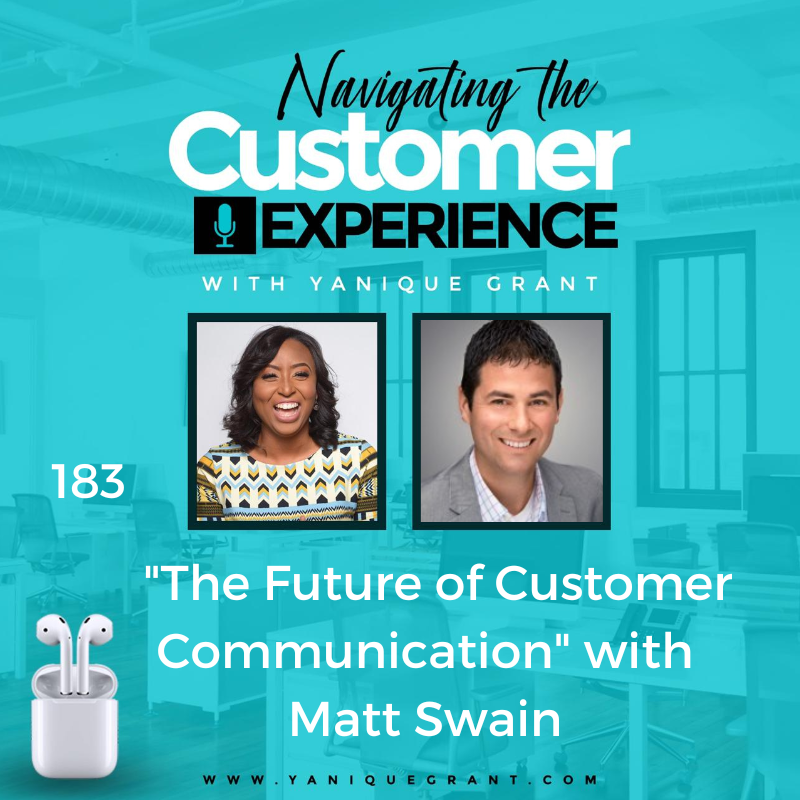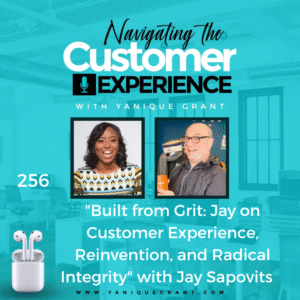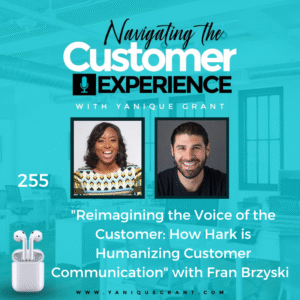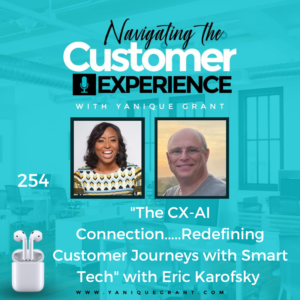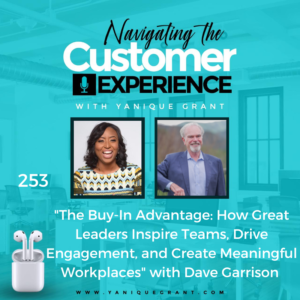Matt Swain is Head of Communications Insights & Experience at Broadridge. He is a recognized Customer Communications industry thought leader and the host of the Reimagining Communications podcast. From delivering keynotes around the world to defining best practices, hundreds of well-known companies have relied on Matt’s expertise and research for their current and future omni-channel communication initiatives.
As Head of Communications Insights & Experience at Broadridge, Matt brings invaluable market research and consulting expertise to clients relative to benchmarking, customer experience optimization, and digital transformation.
Questions
• Our last interview was maybe about a year ago, how have things been for you in the last year? Any new changes or new emerging trends that you’ve identified in the last year?
• Your 2023 CX and Communications Consumer Insights Report, one of the first things I’d like for us to start off talking about is, there is a very big disparity between customer expectations in 2019 being 35% versus 2023 being 69%, that’s like basically a double, it’s about half more than what it was before. What do you think is a primary reason for this? Why are customers’ expectations not being met?
• One of the things that your report also generated and spoke about was personalization. And even if companies have a good handle on it, are they really executing it in such a way that the customer feels like that experience is personalized? Could you share a little bit about the data on that that was collected?
• Now, in delivering that quality experience as you mentioned what the customer is looking for. In the report you spoke quite a bit about digital transformation and just making things easy and simple for customers to access. Could you share with our audience, maybe two or three key takeaways or trends that may have come out of the report as it relates to that particular area?
• I found it quite interesting that there was your mention, or the reporting gave mention to the fact that there was preferences for physical mail versus digital. So, can you explain to us a little bit about why it is you still have some people that are interested in physical mail? Do you think it’s generational? Or do you think it’s just as a backup?
• Based on the report, what are maybe one or two things that organization should be focusing on based on what the data is showing you because we do want to make data informed decisions.
• Is there any new books/content that you’ve been exposed to that you think you’d want to share with our audience that you think would add value to their journey?
• Could you also share with us what’s one thing that you’re working on right now or going on in your life right now that you’re really excited about, either something you’re working on to develop yourself or your people?
• Could you tell our listeners where they could find you online?
Highlights
New Emerging Trends Identified in the Last Year
Me: So, we are having you back on based on the fact that you have published a new paper that we’re quite intrigued for you to share with us some of the high points from that paper. But before we jump into that, could you share with us? I think our last interview was maybe about a year ago, like last year May I think. So, just a little bit under a year, how have things been for you in the last year? Any new changes or new emerging trends that you’ve identified in the last year?
Matt stated that certainly, there’s been a lot happening in the past year, certainly, they looked at some of the changes in the economy and how that might change the way that consumers and customers would want to interact with the companies they do business with. The other one that has emerged even more recently is Chat GPT. And looking at generative AI and how advanced that has gotten, has certainly had a lot of their clients asking about how and where they might be able to apply that in the future.
Disparity in Customer Expectations
Me: Amazing. I’m so happy you brought up Chat GPT, because it’s certainly a hot topic these days. So, back to the report, your 2023 CX and Communications Consumer Insights Report, I had a chance to look through it and I’m quite intrigued with some of the insights. So, one of the first things I’d like for us to start off talking about is, there is a very big disparity between customer expectations in 2019 being 35% versus 2023 being 69%, that’s like basically a double, it’s about half more than what it was before. What do you think is a primary reason for this? Why are customers’ expectations not being met?
Matt shared that this is one of his favorite stats. And he bet they talked about it last year as well, when it was at 65% of consumers that said that most of the companies they do business with need to improve the experience they provide. So, that 35% in 2019, jumping to 69% in their latest report. Over the last five years they are headed from a consumer perspective where businesses are not delivering quality customer experience and the caveat is, it’s most businesses, right?
So, we all have our favorite and whoever offers the best customer experience for you today, that kind of sets the bar for what your expectation is for how you interact with all companies you do business with. And what concerns them is that those leaders are pulling further ahead. So, they mentioned generative AI and Chat GPT. Let’s say those leaders start using that as something to simplify his customer experience. Now, how does everyone else catch up that might not necessarily have as deep of pockets or might not have the resources to deliver on that experience? We’re seeing a bigger gap from the leaders and the rest of the field.
Me: Amazing. And would you say that based on the disparity in the percentage that it’s more prevalent in some industries than it is in others?
Matt shared that he thinks so, the way they asked the question was generically across all of the companies you do business with, but he thinks when they look at who’s providing the best experiences, consumers lean toward banking as providing among the best experiences, but that was still only 3 in 5 consumers that suggested that their banking relationship was best.
The next one after banking was credit cards and that was less than 2 in 5 consumers only 38% of consumers thought that their credit card provider had the best experience. So, it does show banking is a clear leader, there’s still 39% of banking customers that don’t think their banking relationship is among the best. So, it really is dependent on the specific company, more so than the industry.
Me: Now, one of the things your report also mentioned is that what the leaders do better than the persons that are clearly lagging behind them are things like, ease of transaction in terms of navigating account details, that was 43%, communicating clearly was 43%, making it easy to talk to a real person 41%, sending notification when there’s important things to be looked at 34%, and allowing the customers to select how they want to receive communication is 25%. So, what I noticed across all of those, they could actually be grouped under one topic communications, right?
Matt stated exactly and where he was headed with that is he thinks that that is one of the big takeaways for them is, they think so much about customer experience being broader than communications, which it is there are aspects that are not communications driven, but the communications play a really critical role in what that overall customer experience is.
Me: Agreed, agreed. And it’s something I always think that a lot of times, it’s always the little things that can make an experience amazing or fantastic or phenomenal, versus making an experience unbearable, and uncomfortable and just frustrating.
Simple things like maybe just as you mentioned, a follow up telephone call or an email to let you know where things stand. Just yesterday, I was speaking to a friend who is looking to switch insurance companies for his health insurance. And he mentioned that the previous provider that they had, had a portal that you could log in, and each time you had a health claim, you could see the status of the claim online.
Whereas this new company, even though their rates are better, and they’re known as the industry leader in the market, it’s just so frustrating. He has to call the broker and sometimes he’s not aware of the process. And, of course, there’s no online portal to log on so there’s no way for you to know what’s the status of your health claims. So, again, communications, because one of the reasons why he thought the previous provider was better was because of the fact that it was easy to get information instead of him having to take so many steps to get the same information.
Matt shared that he thinks that that aspect of friction, certainly, we talk about friction in any process relative to customer experience, but for accessing information for just being able to get into the system and navigating to the things that are most important to you, those are really centered around a strong communication strategy.
Personalization vs. Customization in Customer Experience
Me: Indeed. Now, one of the things that your report also generated and spoke about was personalization. We’ve been hearing that word for quite a few years now, I don’t know if every company has a good handle on what personalization really is. And even if they have a good handle on it, are they really executing it in such a way that the customer feels like that experience is personalized? Could you share a little bit about the data on that that was collected?
Matt shared that from a consumer perspective, the people that responded to the survey, personalization, certainly for them means make it about me, make it relevant to me. For the company that’s sending that communication, which is the Broadridge client, if you will, they’re more thinking customization or not necessarily one to one personalization, but configurability and configuration. So, certainly with your data, obviously that is personalized to you because that is your account balance or how much you owe or whatever it is.
But then there are those peripheral things, marketing messages, the cross sell, the upsell, the imagery, and those are all things that can turn somebody off if for instance, there’s a picture of a retired couple, and the consumer is just starting his career, and they’re talking to him about early retirement, certainly early retirement would be great. But he doesn’t think that that’s going to be the reality for him today. And then that makes him question the rest of the communication, because he’s been put off by that initial visual as an example.
Me: Very true. So, could you maybe give our audience one strategy of how an organization could combat that type of perception of customization versus personalization?
Matt shared that he doesn’t even know if it’s combating it, he thinks it’s for the recipient. It’s just making sure that they recognize that who they are. So, he guesses the way that you would do that is you have various personas, or different demographics. So, if he’s using that image personalization, as an example, since we started down that route, it might say, anyone who is 18 to 25, show this image, 26 to 45, show this image, 46 plus, show this image, just as an example of how you’d still be able to do that at a customer level, but not fully personalized one to one.
Digital Transformation – Takeaways That Came From the Report
Me: Now, in delivering that quality experience as you mentioned what the customer is looking for. Technology is also very, very big. And I did know for this report that you spoke quite a bit about digital transformation and just making things easy and simple for customers to access. Could you share with our audience, maybe two or three key takeaways or trends that may have come out of the report as it relates to that particular area?
Matt shared that certainly, one that comes to mind, right away is around that simple way to interact across all channels. So, as a person in the industry, he would be talking about this as an omni-channel experience, but for the consumer, they simplified it to just make it easy for him to interact however he wants to interact. And they had 92% of consumers in the survey that said that that’s important to them and that was up from 87% last year.
But then when they asked if these consumers were getting those communications delivered across channels in a simplified way, they only found that 35% were receiving them this way. So, 92%, it’s important, but only 35% are actually seeing that from the companies they’re doing business with.
Me: And again, it goes back to their strategy. Yes?
Matt agreed absolutely. And there’s a strategy component to it and there’s also a platform like the underlying technology component. Sometimes the companies aren’t organized in a way to make it easy for their customers to interact across channels. There are companies that have a mobile team, an email team, a print team and if those teams are working on separate platforms, or with independent strategies, it’s really hard to roll up to a consistent unified experience.
Me: So, your recommendation would be that they should either all be on the same platform, or they should be talking to each other, so the customer at least feels like it’s one experience versus silos of experiences.
Matt stated that ultimately, if you can get to a unified communications platform that everyone’s working from, they can still have their own processes and add ons to that platform. But if everyone’s working from a central platform, where all of the data is stored, preferences are stored, so if his preferred nickname is Matt, instead of Matthew across all channels, across all communications types, everybody looks for that same data point, what’s your preferred nickname? Instead of having him to provide that multiple times. The same point would be for communications preference, if he’s working across different lines of business.
So first, he was just talking about channels like mobile, print, email, but then different lines of business within the same company. Sometimes those are siloed as well. So, he has to set his preferences in for banking, but then again, for his mortgage, and then again for his insurance or for his investments. And it’s really important to have that more centralized to provide a better experience for the customer.
Preference for Physical Mail Versus Digital
Me: So, another big thing that I found interesting, this was a definitely a personal topic for me because I’m all about digital. I found it quite interesting that there was your mention, or the reporting gave mention to the fact that there were preferences for physical mail versus digital versus physical and digital. For me, for example, there are some organizations that you do business with and depending on how the print is prepared and given to you, it can fade over time which doesn’t make any sense, in my opinion, because if I wanted to keep that as record for, let’s say, 24 months down the line, it’s quite possible, I won’t be able to read what’s on the paper.
But if it came in a digital format, it can last a lifetime, because it’s not going to fade once it’s in your email, or on your computer. So, can you explain to us a little bit about why it is you still have some people that are interested in physical mail? Do you think it’s generational? Or do you think it’s just as a backup?
Matt shared that it’s interesting to address your fading comment, he actually hadn’t heard that as one of the primary reasons and it’s one of your key reasons. But it’s really an interesting angle that they haven’t uncovered yet. The research what they had was, in what they’ve seen over time, has been that consumers like to keep a paper record, so that’s usually the top reason that they hold on to paper is for the hardcopy archive.
The second point is that it’s a reminder and if it’s a bill, it’s a reminder to pay, if it’s a statement, it’s a reminder to review account balances. But it’s a trigger and that might be a reminder that to then go online, and review but the physical document, cut through the clutter for some people.
And then the third reason is one that they see both sides of, those that hold on to paper say they’re concerned about data security and privacy going digital. And then conversely, they hear the same thing from people that are digital and not print that say, sending a paper copy feels like there’s a concern about data security and privacy if that paper copy goes to the wrong householder, somebody else opens it. So, they see both sides of that one, but obviously, it is an important factor for consumers on either side of the discussion.
Me: And so, did you find that it was more generational in terms of it was more, let’s say, baby boomers who had the concern of wanting to keep the paper trail or it creating a trigger, as you had mentioned, for them to go online? Or for them to review their statements? Or is it a case where across the board regardless of age 25, 38, 56, pretty much everybody was in that bracket?
Matt stated that it tends to be generational that you’ll have more of younger demographics being comfortable as digital only and more of older demographics, baby boomer plus being more comfortable in paper. But it is interesting, because they have clients that will state that as fact and say, everybody wants to be digital, our client of the future is this up and coming generation and everybody wants to be digital, therefore we will only be digital. And the reality is, you still have some preferences, some people that that say, “Hey, I get everything digital.” So, the paper, like he said, cuts through the clutter.
So, you have some younger demographics that actually say, “No, still send me something by mail, because I actually don’t get all that much mail anymore. So, this actually is something that I look at.”There is also the kind of the longer-term strategy of moving as many people to digital as feel comfortable and as aligns with what’s important to you as a business cost reduction, quality of experience, etc. But then there’s going back to that simple way to interact across channels, it’s really important that we still think in this omni-channel strategy.
So, even if you have 80% of your customers that want to be digital, or that’s your goal to get digital, you still have 20% that you need to service in a paper-based environment and how do we optimize that communication and make that the best possible experience as well?
Summary from 2023 CX and Communications Consumer Insights Report and Recommendations for Way Forward
Me: Can you just give us like I would say a summary, maybe three key things that came out of the report and recommendations for audience depending on whatever industry they’re in, whatever role they play in their organization as to going forward where we basically completed the first quarter of 2023 and we’re embarking on our second quarter. What are maybe one or two things that they should be focusing on based on what the data is showing you because we do want to make data informed decisions.
Matt shared that there were three key takeaways that came out of the research. The first was where they started, which is that CX expectations continue to rise, where they found that 69% of consumers were underwhelmed by most company’s customer experience, and that had nearly doubled since 2019. So, the takeaway for listeners is to really look at where your customer experience is falling short, across the customer journey, and then implement a get-well plan.
The second point was one that they did not address, but they talked around it, which is relative to the importance of the communication as relative to a consumers’ view of how innovative your company is. So, 61% of consumers said that they judge a company’s innovativeness based on the communications it sends. So, he thought that was a really interesting aspect, which also ties back to how important communications are to overall customer experience. So, for their clients, and for companies at large, it’s how do you ensure your communications in print and digital are working for you, not against you.
And then the last point is, they have a lot of companies that comes to them with a desire to take paper out of the process, because they’re looking to say it’s the operational savings, can I remove print and mail. And the challenge is, those consumers that they talked about that have digital access, but still hold on to the paper. And what they found was those double dippers that have paper and digital, 82% of them would go paperless if they received a more engaging digital experience. So, they really think that part of what creates a better digital experience but also helps achieve these paperless goals of their clients is to really focus on creating a better mousetrap, creating a better digital experience, a more engaging digital experience that gives somebody a reason to let go of that paper. And it’s not the reason that the companies they do business with have which is saving on print and postage, the consumer doesn’t care about that, they want a better experience.
Books/Content That You’ve Been Exposed to That Is Value Added
Me: Could you share with us, I know we would have asked you this question last year. But I want you to think about the books that you’ve read in the last year. If you’ve read any new books that you’d like to share with us, that you think would support a lot of what you’ve mentioned in the report, but also just support the overall customer experience initiative that organizations are embarking on. Is there any new content that you’ve been exposed to that you think you’d want to share with our audience that you think would add value to their journey?
Matt shared that last year, he probably leaned toward an interesting book, which was QR Codes Kill Kittens: How to Alienate Customers, Dishearten Employees, and Drive Your Business into the Ground and it was a Scott Stratten book that’s more of a flipbook but it shows you examples of poor implementation of QR codes, but also speaks to the importance of being smart about how and when you incorporate technologies like QR codes into your communications. Now, he will say in their research, they found that 57% of consumers want companies to use QR codes and print to drive them to more information digitally. So, there is a way to balance that.
Now, in terms of something else that came to mind that he didn’t read in the last year but is another one that he really enjoyed. It is Seth Godin’s book, which is Meatballs Sundae: Is Your Marketing out of Sync.
It’s probably 10 or 11 years old now but it’s geared toward marketers. And it focuses on doing what you’re good at, but also telling a good and cohesive story. So, he thinks it’s actually a really good analogy to tie in the research that they do with the products and services that Broadridge offers. So, it’s the research supports the storyline on how and why they’re developing their products and services the way they are to deliver on that better experience for their clients and those end consumers.
What Matt is Really Excited About Now!
When asked about something that he’s really excited about, Matt shared that it can’t be the research it because that’s what he’s most excited about.
Me: Are you planning to take the research outside of just doing podcasts interviews and talking about it? Are you going to do like a workshop around it? Are you thinking of maybe having an international conference, there’s so many things that could spin out of this research?
Matt shared that they use it throughout the year. And so, he always gets excited when they’ve launched the newest, latest research, and it’s always a great time to catch up with Yanique because it’s fresh and new. And then they use it over the course of the year in presentations at events, not their own events but sometimes their events as well, but presentations at events, but also it creates a really good client dialogue.
And so, he gets really excited about bringing the research to clients saying, “Here’s what we’re hearing in the market from your customers, and how does this align with some of your priorities as a business today? And where are you headed?” And they get into some really great strategy discussions that ultimately leads toward their clients adjusting their priority list or adding new items to that list. But also, it gives them a chance to validate the findings within each of those clients and across those industries.
Me: That’s a very good point, because now you’re actually using the data to see if the decisions that you’re making will actually come in alignment with what the market is saying. And you get to see if it was a success or a fail.
Where Can We Find Matt Online
Website – www.broadridge.com
Podcast – Reimagining Communications Podcast
LinkedIn – @askmattswain
Twitter – @AskMattSwain
CX Survey Landing Page: https://www.broadridge.com/report/brcc/2023-cx-and-communications-consumer-insights
Meatball Sundae: https://www.amazon.com/Meatball-Sundae-Your-Marketing-Sync/dp/1591845351
Please connect with us on Twitter @navigatingcx and also join our Private Facebook Community – Navigating the Customer Experience and listen to our FB Lives weekly with a new guest
Links
· Meatball Sundae: Is Your Marketing out of Sync? By Seth Godin
Grab the Freebie on Our Website – TOP 10 Online Business Resources for Small Business Owners
The ABC’s of a Fantastic Customer Experience
Do you want to pivot your online customer experience and build loyalty – get a copy of “The ABC’s of a Fantastic Customer Experience.”
The ABC’s of a Fantastic Customer Experience provides 26 easy to follow steps and techniques that helps your business to achieve success and build brand loyalty.
This Guide to Limitless, Happy and Loyal Customers will help you to strengthen your service delivery, enhance your knowledge and appreciation of the customer experience and provide tips and practical strategies that you can start implementing immediately!
This book will develop your customer service skills and sharpen your attention to detail when serving others.
Master your customer experience and develop those knock your socks off techniques that will lead to lifetime customers. Your customers will only want to work with your business and it will be your brand differentiator. It will lead to recruiters to seek you out by providing practical examples on how to deliver a winning customer service experience!
Our Next Webinar – May 16, 2023 at 10:00 am


